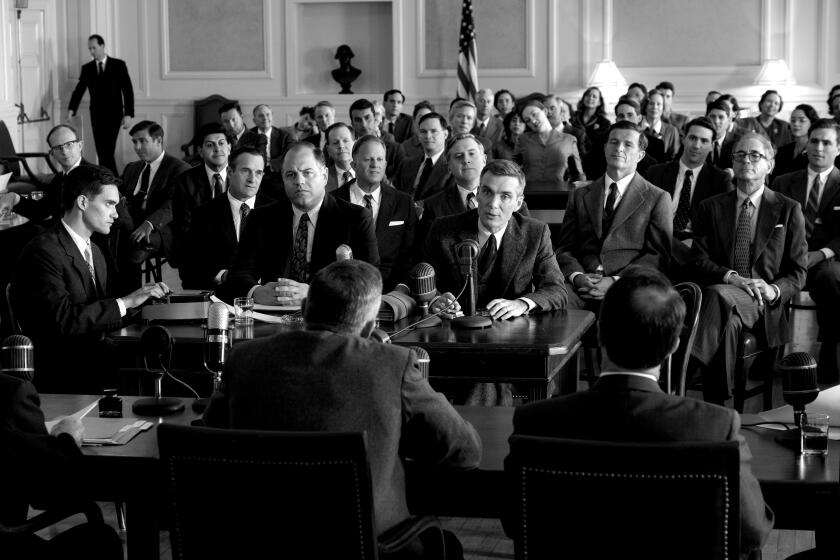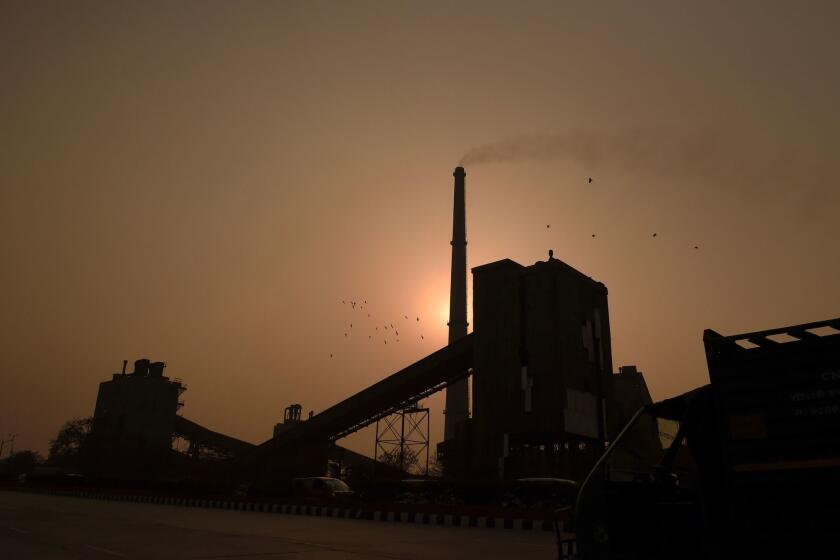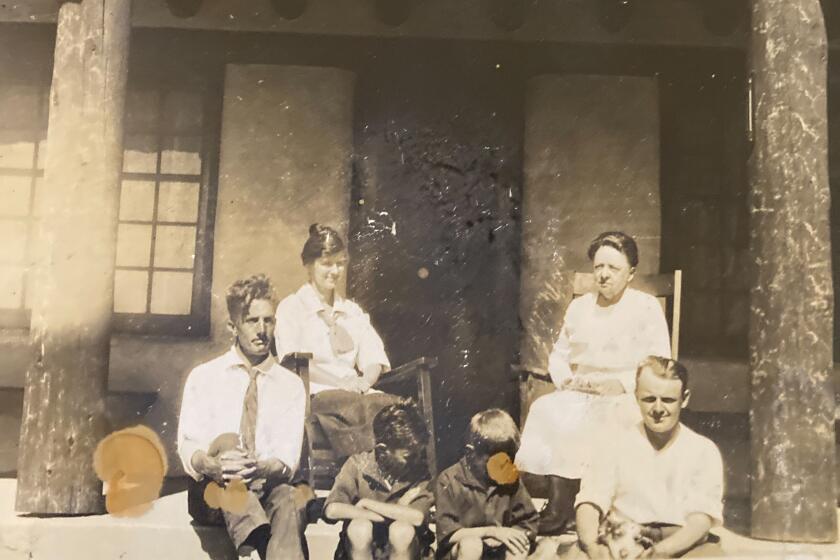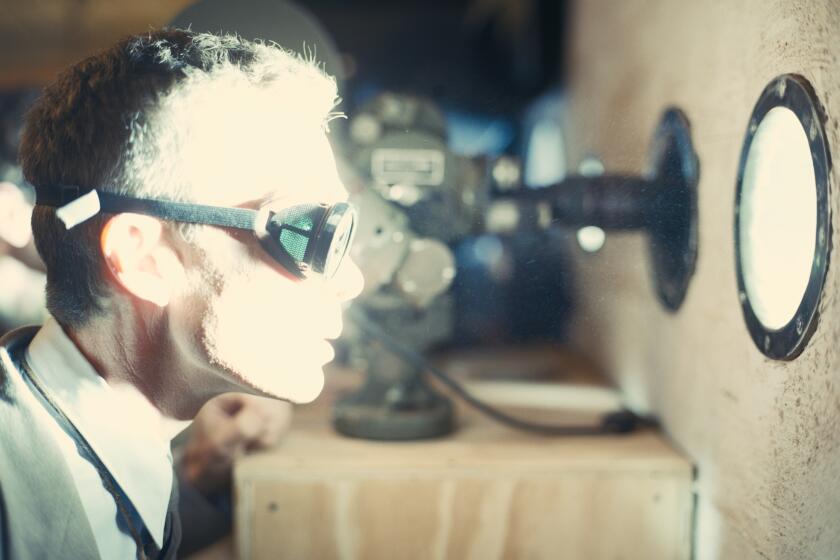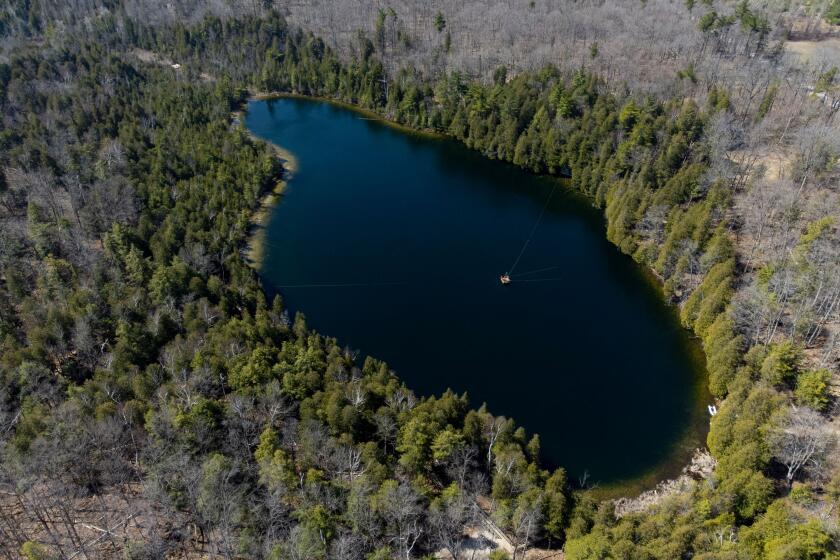Opinion: The atomic bomb laid down the marker for humanity’s era of catastrophic change
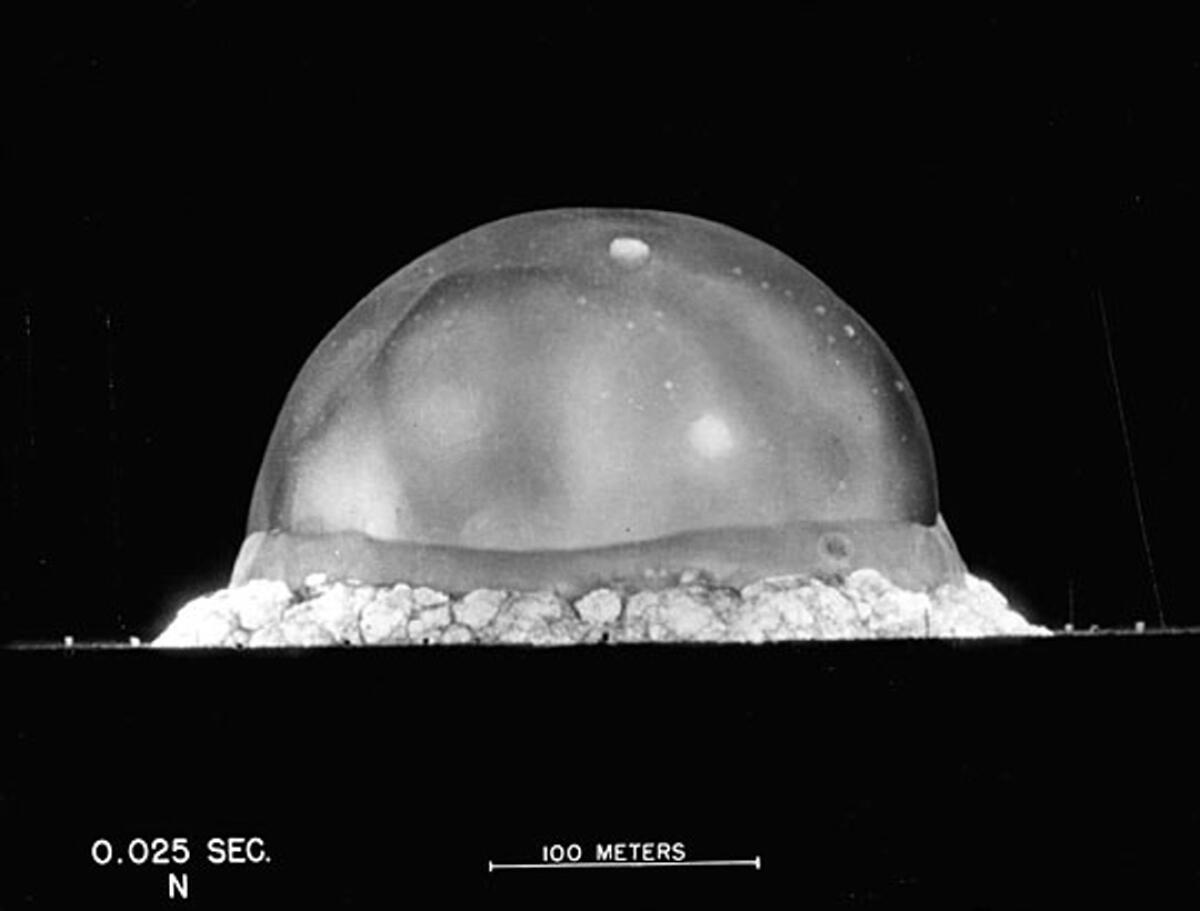
Christopher Nolan believes J. Robert Oppenheimer is the most important person who ever lived. “By unleashing nuclear power,” the film director concludes, “he gave us the power to destroy ourselves.” Nolan might exaggerate, but Oppenheimer, the subject of Nolan’s hit movie, is surely worthy of the title most often applied to him, “father of the atomic bomb.”
Oppenheimer ran the Manhattan Project at Los Alamos, N.M., during World War II, managing a team of the smartest physicists he could recruit. Together, they created the bomb — atomic energy, the nuclear age — in a remote corner of America’s Southwest.
In delivering us into the atomic age, Oppenheimer also became the father of the Anthropocene. Given his anguish about America’s deploying his nuclear weapon in 1945, I suspect “Oppie” would also agonize about his ownership of our current geologic time period. Nevertheless, he and his fellow physicists gave us the indicator — what geologists call the “golden spike” — that marks a new epoch in Earth history.
Starring Cillian Murphy in the title role as the architect of the Manhattan Project, the historical drama also features Florence Pugh and Robert Downey Jr.
Earth scientists have been debating whether to add this new epoch to their time scale for two decades. In 2019, they reached agreement: If you’re alive now you live in the Anthropocene — a geologic epoch incorporating humans in its very definition: “Anthropo,” as in anthropology, meaning “human”; and “cene,” as in so many recent geologic epochs — Miocene, Pleistocene — meaning “recent” or “new.”
Until the International Commission on Stratigraphy sealed the change with a vote, we were living in the Holocene, the “wholly recent” — a relatively uneventful 12,000 years that started at the end of the Ice Age.
But 8 billion humans now inhabit our planet. Our influence has become so extreme, so pervasive, that we must take responsibility for a new era.
We casually burn fossil carbon from plants that grew 200 million years ago. We alter the climate. We strew waste across the Earth from our industrialized societies. As global temperatures rise and habitats are disrupted, we speed up the course of evolution. And, beginning with Oppenhemer’s “gadget,” our nuclear bombs have blanketed the Earth with radioactive fallout.
Man’s tenure on Earth is brief on the astronomical time scale, but the changes wrought by Homo sapiens have been measurable and profound.
Anthropocene. The “peopled recent.” Humans have taken command of geological time. It’s an astonishing thought.
Geologic time periods are graphed, with beginning and ending dates. When did humans take over? When did the Holocene end and the Anthropocene begin?
Historians and anthropologists look back to the dawn of the Industrial Revolution or even further, to the adoption of agriculture or the “Columbian Exchange,” when Columbus’ explorations brought together the Eastern and Western hemispheres, scattering once-geographically limited species across the globe. Indigenous people did plenty of landscape management, burning and deforesting when it suited their needs, but it took thousands of years of increasing human interventions to arrive at a geologic hinge point: “an observable, unambiguous change in the physical properties or fossil content of the strata.”
My father’s family farmed on the Los Alamos plateau, before the land was seized to develop the first atomic bomb. Their lives there were among the many secrets they wrapped in a shroud of silence.
Radioactive plutonium that drifted to Earth in the first years of Oppenheimer’s nuclear age provides geologists with a recognizable, mappable layer in the Earth’s crust — perhaps the most pervasive signal of any marker between geologic time periods. This summer, geologists even settled on a “type locality” for the Anthropocene marker: Crawford Lake, Ontario. This little suburban lake happens to be extraordinarily deep, with perfect chemistry for chronicling annual deposits of sediment, pollution and pollen grains over thousands of years. The lake’s record shifts abruptly in 1950, when plutonium shows up, drifting across the continent from nuclear bomb tests in Nevada and the Pacific.
A worldwide spike in fly ash from burning coal also occurs in 1950. And so most stratigraphic experts have settled on 1950 as the curtain-raiser for the Anthropocene.
The first device that blasted fallout into the atmosphere exploded at the Trinity site on July 16, 1945. The next month the United States bombed Hiroshima and Nagasaki — killing 200,000 people, bringing World War II to a close. But we kept developing, testing and exploding fission and fusion weapons after the war, more than 2,000 times, across the world. Only North Korea is still testing today.
Geologic epochs last for thousands and even millions of years. But the Anthropocene — initiated by human interference and likely to end by it as well — may be the shortest of them all.
Christopher Nolan’s ‘Oppenheimer’ hypes the god-like power of nuclear weapons, breeding fatalism and erasing human agency.
At Los Alamos and beyond, J. Robert Oppenheimer inspired people. His scientific work was groundbreaking, but his primary skill was successfully corralling dozens of fiery and brilliant minds.
When his team succeeded, when the Trinity gadget exploded, Oppenheimer both exulted and mourned. He said, “We knew the world would not be the same.” And then, after Japan was bombed, he told President Truman, “I have blood on my hands.”
That blood, that stain, the evidence of human hubris and unfettered intellect and meddling with the powers of the universe doesn’t end with nuclear power. The Anthropocene denotes more than just the harnessing of the atom.
Scientists believe that the sediment layers of a lake in Canada point to a new era marked by the damaging consequences of human activities.
We keep rummaging through metaphors and vocabulary for the right words to describe the transformation we’ve caused in the Earth’s chemistry, climate and biodiversity. “The Great Acceleration” signifies even more human meddling than the geologists address. I’d love to be able to ask Oppenheimer, the patriarch, the prime accelerator, the man who gave us that fateful push into this epoch, what words he would use.
With his deep respect for Hindu teachings, Oppie might simply repeat his famous quotation from the Bhagavad Gita, the words that came to him after he saw the blinding light of the first nuclear explosion, “the radiance of a thousand suns” in the New Mexico desert: “Now I am become Death, the shatterer of worlds.”
Oppenheimer indeed shattered our world when he ushered us into the Anthropocene. As Christopher Nolan has said of his complicated protagonist, “Like it or not, we still live in his world, and we always will.”
Stephen Trimble is updating his book, “The Sagebrush Ocean: A Natural History of the Great Basin,” for a 35th anniversary edition to be published in 2024.
More to Read
A cure for the common opinion
Get thought-provoking perspectives with our weekly newsletter.
You may occasionally receive promotional content from the Los Angeles Times.
